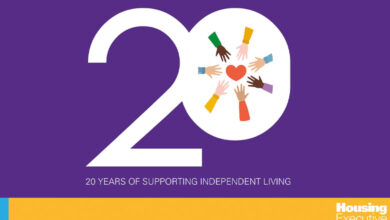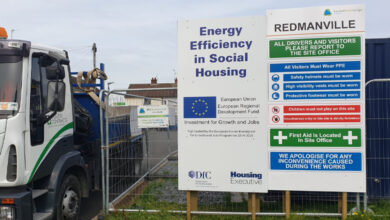Assembly round-up
Following a push in December to progress legislation, the Assembly’s Christmas recess was interrupted by the water crisis and the “shambolic” response by Northern Ireland Water. The new year began with reviews and negotiations on a tough draft budget.
Two ministers in particular faced criticism during December and January. The mistaken release of three prisoners resulted in David Ford coming under fire. December began with him admitting a litany of Prison Service failures. “The three erroneous releases, the reported breach of the outer perimeter security by a journalist at Maghaberry prison, the many reports that are outstanding on the operation of the Prison Service, forthcoming reports from the Prisoner Ombudsman on a death in custody and a report from the Chief Inspector on Prison Service governance” justified his calls for a complete review of the Prison Service, he stated.
The question of who was responsible for gritting footpaths during the snow and ice brought Conor Murphy into the spotlight.
Murphy remained in a controversial position when Northern Ireland Water was criticised by First Minister Peter Robinson for its “shambolic” handling of a water crisis which saw 60,000 homes with little or no water. A UUP motion of no confidence in the Minister was not immediately tabled, probably because it would have had no impact, as a Minister can only be forced to resign by their party or a cross-community vote.
Defending his position, Murphy told the Assembly on 17 January that he had “apologised to the public on behalf of my department.” His political opponents’ calls for his resignation were a “cynical exploitation of people’s misery and hardship.”
The draft Budget for 2011-2015 was rushed through in the early hours of 15 December. The ability to agree the document was “a litmus test for the Executive” according to Sammy Wilson. When asked by Margaret Ritchie how he determined the financial priorities for the next four years without a new Programme for Government, Wilson replied: “There is no indication that the priorities in [the current Programme for Government], namely the growth of the economy, the protection of front line services and the protection of disadvantaged people in the face of the recession, will be any different in a new [one].”
He was commended by Daithí McKay for commissioning the Environment Minister to introduce a plastic bag levy, Wilson joked: “My only regret about the plastic bag tax is that leaflets will probably go all round North Antrim saying what a great triumph it is for Daithí McKay.”
Overall, Wilson stated that the draft Budget “reflects the priorities of the people of Northern Ireland [and] is good for families and businesses.”
A new West Belfast face was evident in the chamber from 8 December as former IRA hunger striker Pat Sheehan replaced Gerry Adams. He went on to controversially claim that the Troubles were “civilised” in comparison to other conflicts around the world.
In an unprecedented move, the Greens appointed researcher Steven Agnew as leader of the northern arm of the party.
Agnew’s first task was “to put to bed the myth that [it] is a single issue party. The Green Party wants to see all political decisions based on whether they are good for the economy, good for people and good for the environment.”
Following a string of resignations, a further blow to the UUP came when East Londonderry MLA David McClarty resigned after being deselected. He will now run as an independent, leaving the UUP without any MLAs in the North West and joint third with the SDLP, which also has 16 MLAs.
In a poignant tribute to Michaela McAreavey who was murdered in January, First Minister Peter Robinson said: “I have a beautiful daughter of a similar age to Michaela, and I love her to bits. That gives me a sense of the loss, but only a sense, because the reality is so much more painful than the imagining.”
Danny Kennedy, who knows Bishop John McAreavey, paid tribute “to the very dignified manner in which the [two] families have conducted themselves in what must be an unimaginably difficult time.”
Alban Maginness claimed: “If some good has come out of this evil act, it is that we have come together in solidarity and in a bond of friendship, sympathy and understanding for John McAreavey in particular and for the respective families involved.”






